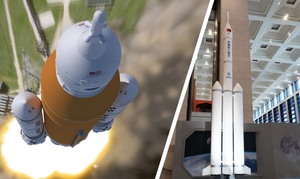
How the U.S. and China plan to land humans on the Moon before 2030
Both the United States of America and the People's Republic of China are planning to perform crewed missions to the Moon before the year 2030. The two countries have different ideas on how these missions should be performed in terms of launch plans and public-private partnerships. But how do their plans differ and how are they supported?
What does America's Moon mission look like?
The United States has several Moon landing plans under the Artemis program. For this article, we will be using Artemis III as it is the first landing mission for Artemis. With that out of the way, the mission plan is believed to be as follows:
A Starship propellant depot will launch from the West coast of the United States, the depot would be a larger version of Starship that cannot return to Earth but can refuel other Starship spacecraft.
Following the depot Starship, between four and fourteen Starships would launch to the depot Starship carrying extra propellant to refill the depot. These launches would take a few weeks.
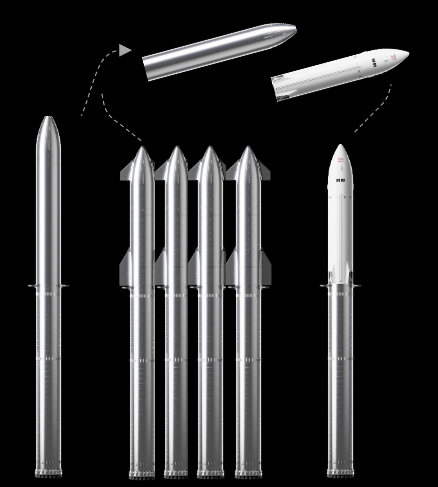
After the depot Starship is sufficiently fuelled, the Starship Human Landing System will launch into low Earth orbit from the West coast of the United States. The Human Landing System Starship would then rendezvous with the depot and be refueled.
Once the Starship Human Landing System is refueled, it would depart on a trans-lunar trajectory before entering a near-rectilinear halo orbit of the Moon. After arriving at the Moon it would await the Orion spacecraft and its crew.
A few weeks after the start of Starship launches, a Space Launch System rocket would launch from Launch Complex 39B, in Florida, carrying four crew onboard Orion. The rocket would spent a few hours in low Earth orbit before starting up it's second-stage to place the Orion spacecraft onto a trans-lunar trajectory. After a few days of flight towards the Moon, Orion would enter a near-rectilinear halo orbit.
Not long after arriving at the Moon Orion would then rendevous the the Starship Human Landing System. After rendevous in lunar space, Orion and Starship would dock and allow the crew to move between the two spacecraft.
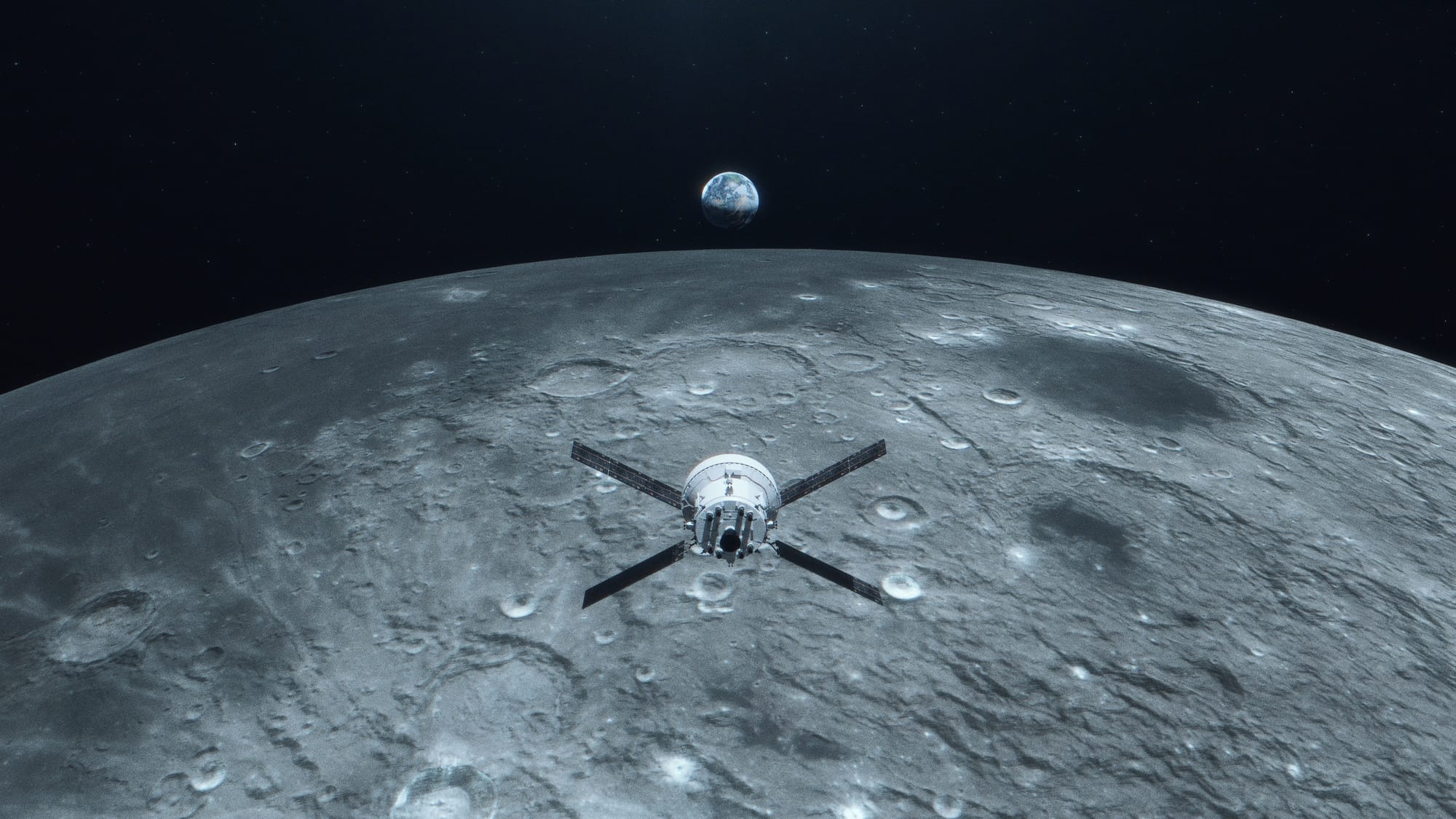
Once the Starship Human Landing System has completed a series of checks by the crew it would undock from Orion and begin descent towards the lunar surface, two crew would have also moved into Starship. After Starship is at a safe distance from Orion, it would burn to head for the surface, Starship may move into a lower orbit of the Moon prior to final descent to the surface.
After the descent to the lunar surface is complete and soft contact is complete with the descent engines shutoff the two crew onboard would then prepare to step out onto the surface.
While the Starship Human Landing System is on the surface of the Moon, the two crew members are planned to conduct four extra-vehicular activities on the surface. The two crew would deploy science experiments and gather samples from the surface.
After spending a week on the surface, the Starship Human Landing System would liftoff and head into orbit of the Moon to rendevous with the Orion spacecraft. The two spacecraft would then dock, with the surface crew and samples being moved into Orion.
Once the crew and samples are secure inside the Orion spacecraft it would undock from the Starship, after undocking the Starship would be sent to a heliocentric orbit. Orion would also burn to return to Earth a few days after undocking.
The four crew would then spend a few days aboard Orion while it travels back to Earth.
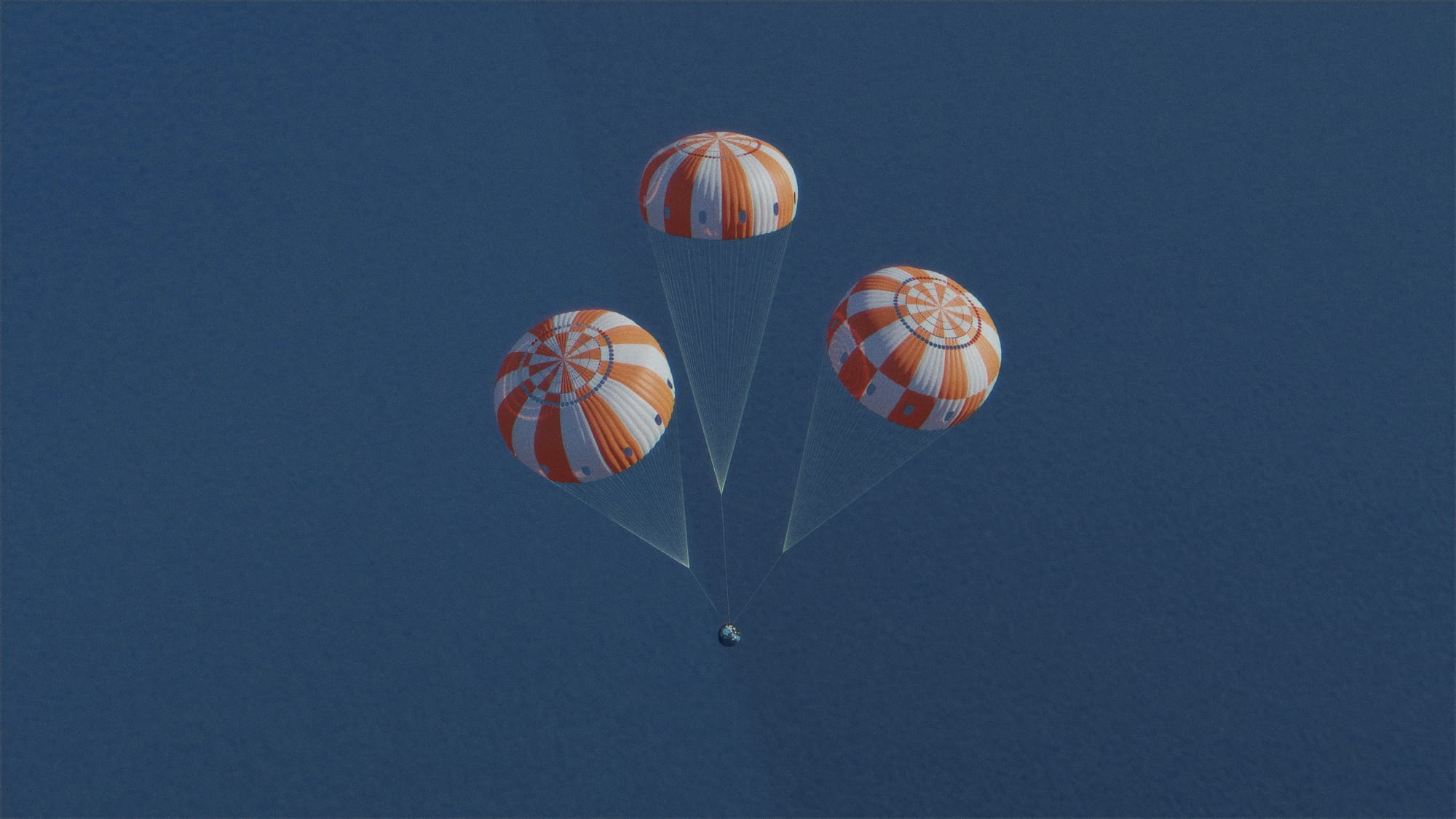
Once Orion passes a predetermined point, it would separate the capsule from the service module and begin re-entry into Earth's atmosphere. Once through the heat of entry into Earth's atmosphere at speeds of over 11,000 meters a second, or roughly 24,500 miles per hour, the capsule will deploy its parachutes to safely splash down at sea.
Once the crew is recovered safely back on Earth, the mission is complete.
What does China's Moon mission look like?
China's crewed lunar landing mission will utilize two Long March 10 launches from the Wenchang Space Launch site, the mission plan is believed to be as follows:
The first Long March 10 will take off from the Wenchang Space Launch Site carrying the Lanyue spacecraft to a trans-lunar trajectory. After the Long March 10 completes the trans-lunar burn the spacecraft will separate and spend the next few days flying towards the Moon.
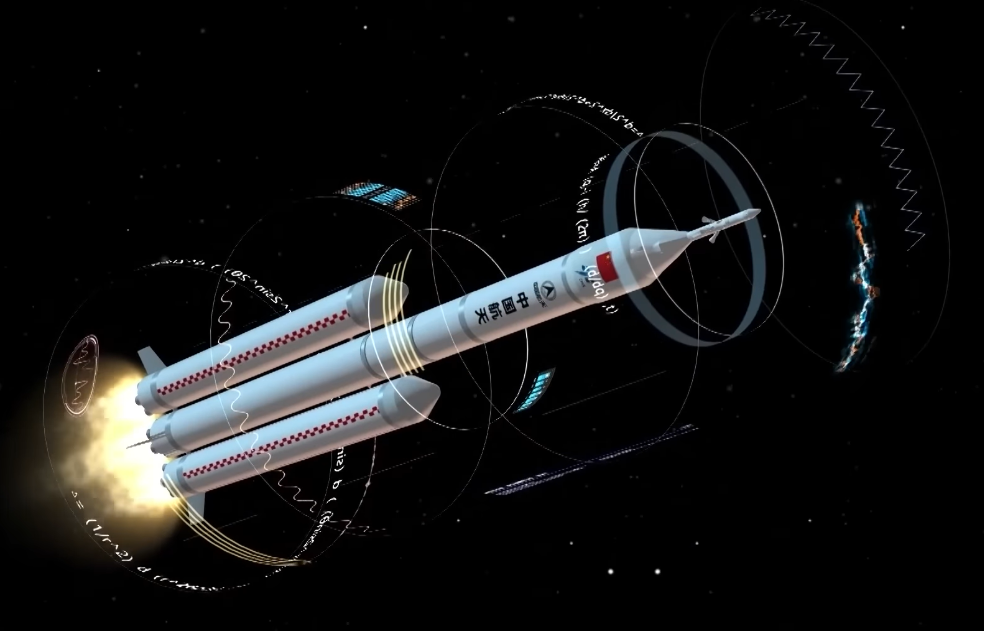
Once near the Moon, the Lanyue spacecraft will light its propulsion module engine to enter an orbit of the Moon. The spacecraft will then wait in lunar orbit for the Mengzhou spacecraft.
A few days later a second Long March 10 will take off from the Wenchang Space Launch Site carrying three crew taikonauts aboard the Mengzhou spacecraft to a trans-lunar trajectory. After the Long March 10 completes the trans-lunar burn, the spacecraft will fly towards the Moon over the next few days.
Once the Mengzhou spacecraft is near the moon it will light its engines to enter orbit of the Moon. The spacecraft will then rendezvous with the Lanyue spacecraft in orbit. After rendezvous, the two spacecraft will dock allowing the crew to move between the two spacecraft.
After checkouts of the two spacecraft are completed in lunar orbit the two spacecraft will undock with two crew being headed for the surface and one remaining on orbit. It is believed the propulsion module will still be attached to the Lanyue spacecraft and will perform its final burn to send the spacecraft bound for the surface.
After a predetermined coast phase, the Lanyue spacecraft will separate from the propulsion module and light its engines for landing. The exact landing profile is unknown but it is likely to be similar to the Lunar Module of the Apollo program.
Once the Lanyue spacecraft has confirmed its engines shut off and has soft contact with the lunar surface the crew will prepare to exit the spacecraft. The two taikonauts will exit the spacecraft a few hours after the landing.
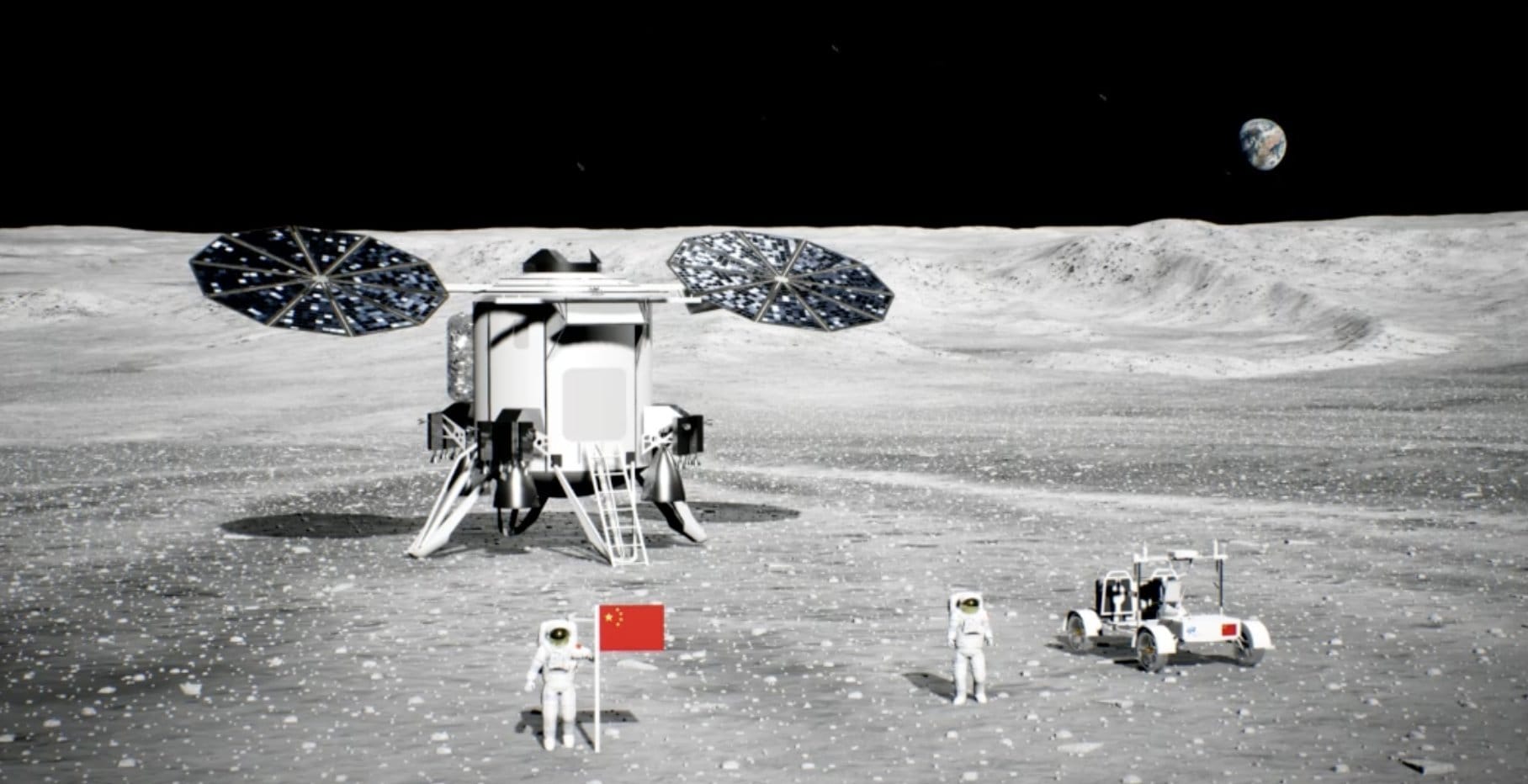
The two taikonauts will spend a believed eight hours outside on the lunar surface gathering various samples and deploying science equipment, including a rover to traverse large distances. After spending up to eight hours outside the two taikonauts will board the Lanyue spacecraft and safely store the gathered samples.
Once the two taikonauts are prepared to leave the lunar surface the Lanyue spacecraft will relight its engines and return to lunar orbit where it will rendezvous with the Mengzhou spacecraft. The two spacecraft will once again dock where the crew will transfer themselves and lunar samples out of the lander.
After the samples are removed from the Lanyue spacecraft and any planned cargo is transferred between the two spacecraft they will undock for the second and final time. The Mengzhou spacecraft will then move to a safe distance away before it lights its engines again to carry the three taikonauts aboard on a trajectory back to Earth.
The three crew members will then spend a few days inside the 'Mengzhou spacecraft as it travels back to Earth.
At a predetermined point before entry into Earth's atmosphere, the capsule of the Mengzhou spacecraft will separate from its service module and orient itself for entry. Once through the heat of entry into Earth's atmosphere at speeds of over 11,000 meters a second, or roughly 24,500 miles per hour, the capsule will deploy its parachutes to either touchdown on land or splashdown at sea for recovery of the three taikonauts and the lunar samples.
Once the crew is recovered safely back on Earth, the mission is complete.
What are America's Lunar spacecraft?
Orion
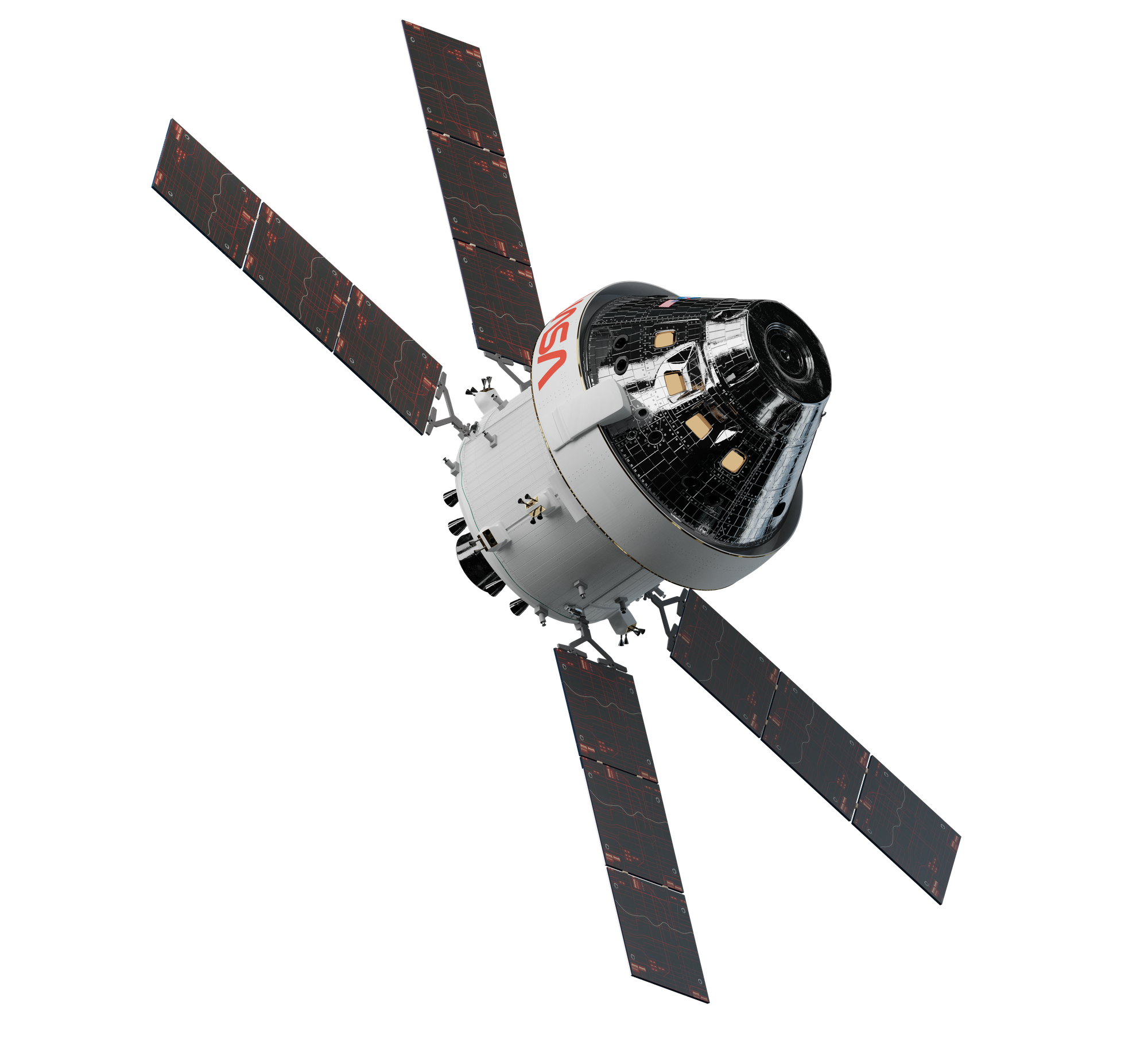
Orion is NASA's crewed spacecraft for lunar orbit operations. The spacecraft can carry up to four astronauts onboard for twenty-one days.
The spacecraft has four solar panels mounted on the service module to generate power. Orion weighs 26,520 kilograms when atop of the Space Launch System.
Orion consists of a service module, to power the spacecraft and allows it to enter lunar orbit, and a crew module, to house the crew. The service module gets a large amount of its thrust from the Orbital Maneuvering System engine, refurbished from the Space Shuttle, with it generating 2.7 tons of thrust.
Starship Human Landing System
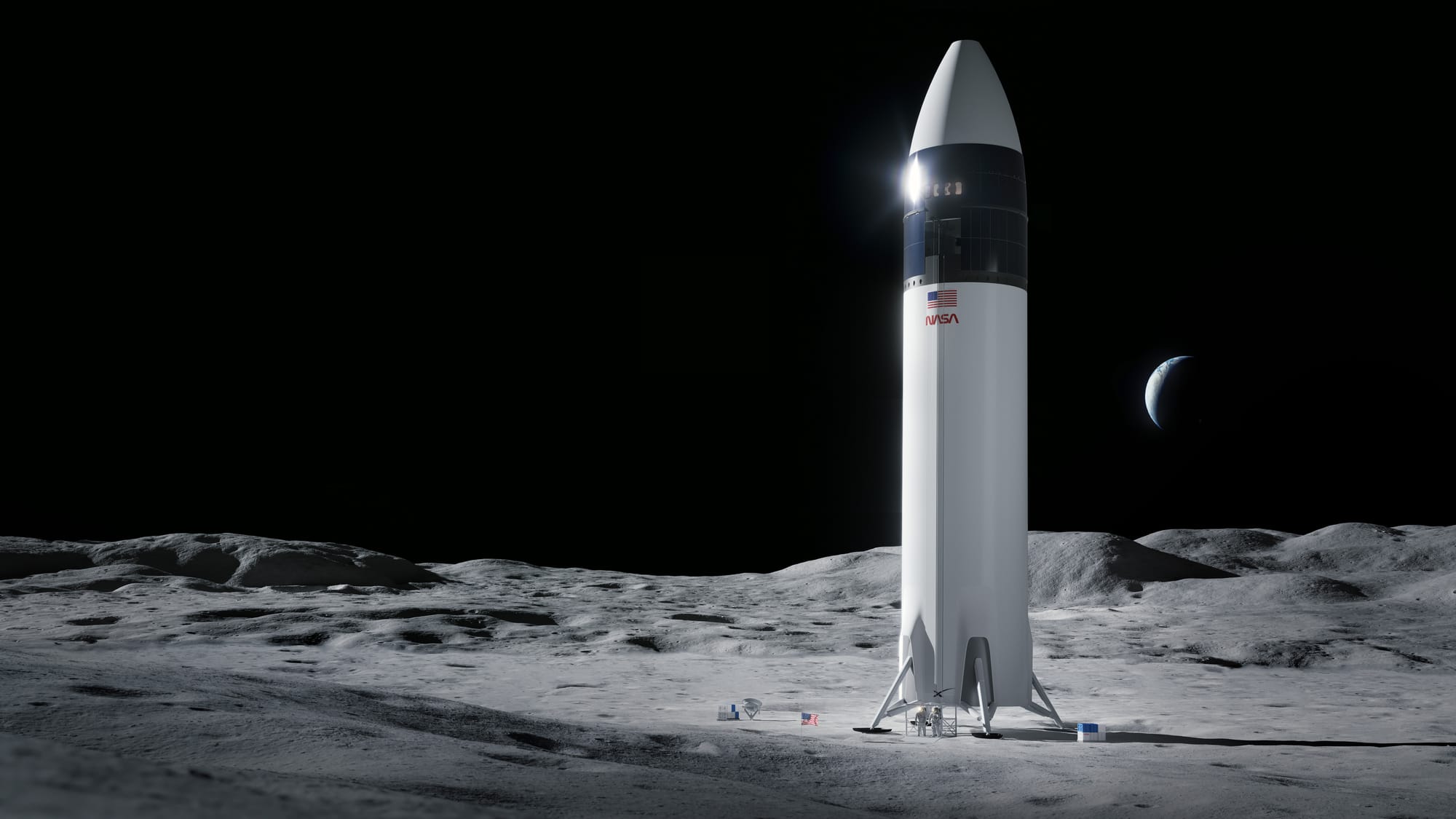
The Starship Human Landing System is SpaceX's bid for NASA's crewed lunar lander as part of the Artemis program. The spacecraft would be able to carry four astronauts to the surface, this number could increase in the future.
The Human Landing System Starship will be fifty meters tall and nine meters in diameter, it will have three sea-level Raptor engines and three vacuum Raptor engines as well as a ring of smaller engines for the final descent. For power, the spacecraft will have solar panels that are either static and mounted around the sides or deployable, which would be stowed during launch.
The entire vehicle will ascend from the surface with no staging occurring for the vehicle. SpaceX claims that the Starship Human Landing System will be able to deliver 100,000 kilograms of payload to the lunar surface.
What are China's lunar spacecraft?
Mengzhou
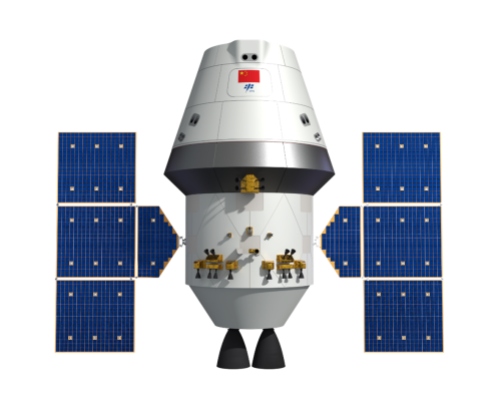
The Mengzhou spacecraft is China's in-development crewed spacecraft for low Earth orbit and lunar orbit operations. The spacecraft is believed to be able to carry up to seven taikonauts to low Earth orbit or three taikonauts to lunar orbit.
The spacecraft will have two large solar panels to power its systems and life support for the crew. The spacecraft is believed to weigh 26,000 kilograms fully fuelled for a lunar mission. It is currently unknown what changes will be made for the low Earth orbit version of the Mengzhou spacecraft.
The Mengzhou spacecraft consists of a command module, to house the crew, and a service module, to power the spacecraft and allow it to enter lunar orbit.
Lanyue
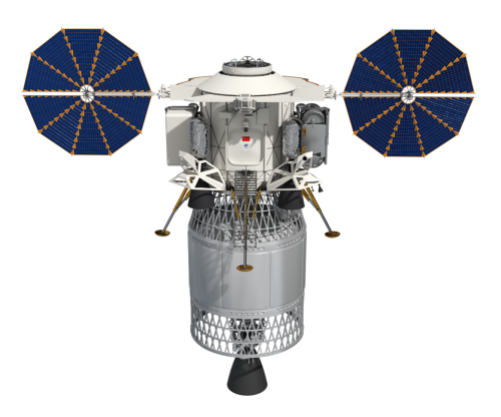
The Lanyue spacecraft is China's in-development lunar lander spacecraft for lunar landing missions. The spacecraft will be able to carry two taikonauts to and from the lunar surface in its current design.
The spacecraft will have two large circular solar panels to power its systems and life support for the crew. The spacecraft is believed to weigh 26,000 kilograms fully fuelled with its propulsion module.
The Lanyue spacecraft consists of a lander module, to perform lunar landings and house the crew for their mission, and the propulsion module, which will allow the spacecraft to enter lunar orbit.
What are America's launch vehicles for a Moon mission?
Space Launch System
The Space Launch System, or SLS, is NASA's Moon rocket for sending crew and cargo toward the Moon, or deep space. Currently, the Space Launch System can deliver 27,000 kilograms to a trans-lunar trajectory, with plans to increase it up to 46,000 kilograms. There are currently no plans to reuse any part of the Space Launch System.
On the launch pad, the Space Launch System is nintey-eight meters tall and weighs 2,610,000 kilograms fully fuelled. The core stage has a diameter of 8.4 meters with the second stage diameter of 5.1 meters, the two boosters have a diameter of 3.6 meters.
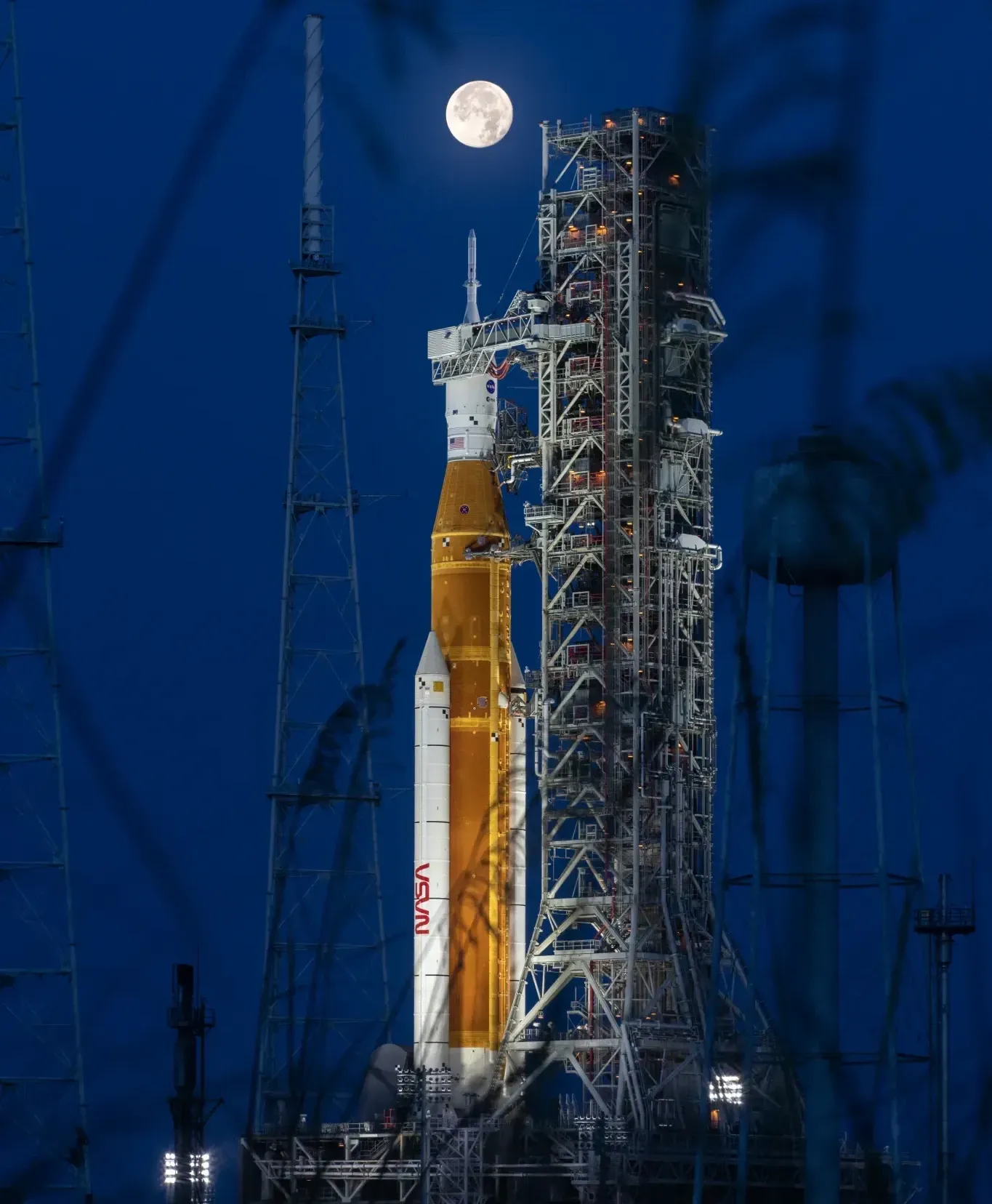
The core stage of the rocket burns liquid hydrogen and liquid oxygen in four RS-25 engines for a little over eight minutes. Each engine generates 232 tons of thrust for a total of 928 tons of thrust with all four engines.
The two boosters that provide the majority of the rockets thrust at liftoff burn polybutadiene acrylonitrile and an ammonium perchlorate composite for a little over two minutes. Each booster generates 1,633 tons of thrust for a total 3,265 tons of thrust with both boosters.
The second-stage of the Space Launch System is called the Interim Cryogenic Propulsion Stage, or ICPS. The Interim Cryogenic Propulsion Stage is built by United Launch Alliance. The stage burns liquid hydrogen and liquid oxygen in a single RL10B-2 engine. The single RL10B-2 generates 11.2 tons of thrust for almost nineteen minutes.
There are also plans to replace the second-stage with a more powerful one beginning with Artemis IV, the two boosters are also looking to be upgraded starting from Artemis IX.
Starship-Super Heavy
Starship-Super Heavy is SpaceX's in-development fully reusable super heavy-lift launch vehicle and the largest rocket currently flying. SpaceX is currently aiming to have the launch vehicle deliver one-hundred and fifty tons to low Earth orbit while reused or two-hundred and fifty tons when expended, although there are rumors from SpaceX of an expendable payload capacity of three-hundred tons.
On the launch pad, Starship-Super Heavy is one-hundred and twenty-one meters tall and weighs 5,000,000 kilograms fully fuelled. The diameter of both vehicles is nine meters, excluding aerodynamic control surfaces.
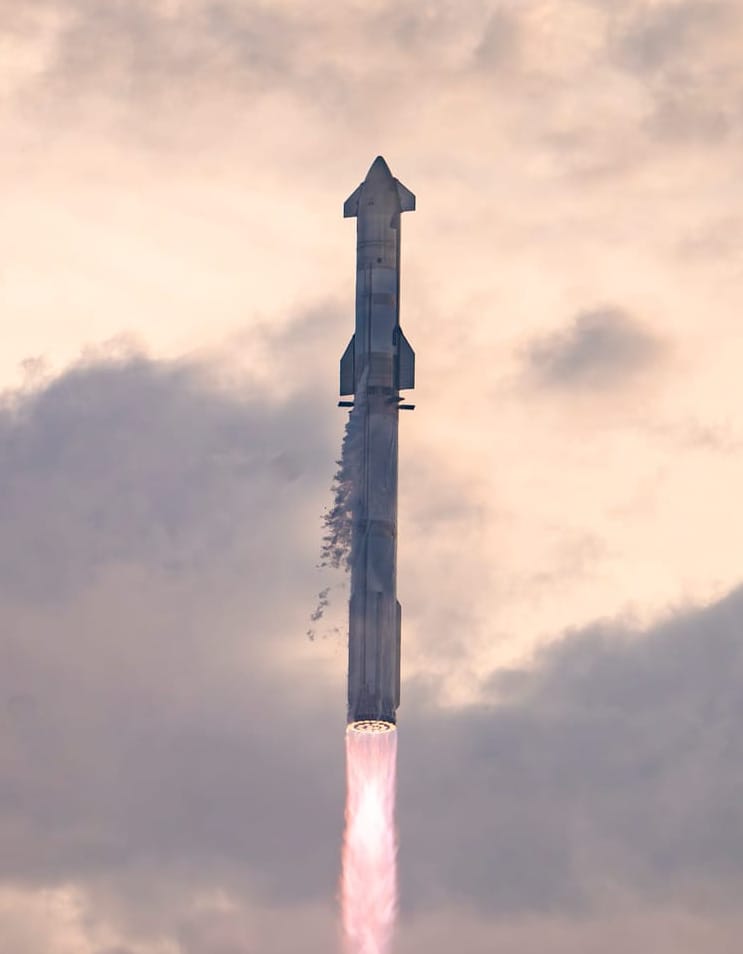
Starship is the second-stage of the Starship-Super Heavy launch vehicle and is planned to be capable of multiple missions into orbit, after a short refurbishment. The vehicle is fifty meters tall and nine meters in diameter, excluding its four aerodynamic control surfaces. Fully fuelled Starship is believed to weigh 1,300,000 kilograms with an approximate weight of 100,000 kilograms unfuelled.
The Starship second-stage is powered by three sea-level Raptor engines along with three vacuum-optimized Raptor engines. These sea-level engines are believed to generate 230 tons of thrust each with the vacuum-optimized engines generating 258 tons of thrust each for a total combined 1,500 tons of thrust for Starship. The vacuum-optimized Raptors are unable to gimbal requiring the sea-level Raptors for control of the second-stage on ascent and landing.
The total burn time for the Starship second-stage remains unknown outside of SpaceX but is known to burn liquid methane and liquid oxygen in its engines.
SpaceX is working on a depot and lunar lander, Starship Human Landing System, variants of the Starship second-stage for NASA's Artemis programs. Details on these are largely unknown outside of observer predictions.
Super Heavy, also called 'the Super Heavy booster', is the first-stage of SpaceX's Starship-Super Heavy launch vehicle. The giant Super Heavy first-stage is planned to be capable of multiple flights per day with minimal refurbishments and inspections. The vehicle is seventy-one meters tall and nine meters in diameter, excluding its four grid fins and chines. Fully fuelled Super Heavy is believed to weigh 3,600,000 kilograms with an approximate mass of 200,000 kilograms unfuelled.
The Super Heavy first-stage is powered by thirty-three sea-level Raptor engines generating a combined thrust of 7,590 tons, with each engine generating 230 tons of thrust. The outer twenty Raptor engines are unable to gimbal with the inner thirteen being able to for control of the first-stage.
The total burn time of Super Heavy remains unknown outside of SpaceX but is known to burn liquid methane and liquid oxygen in its engines.
Super Heavy also features a hot-staging ring atop of it to allow for a faster and simpler staging process, according to SpaceX. The hot-staging ring has dozens of gaps on the sides to allow for the Raptor engine exhaust of Starship to escape.
What are China's launch vehicles for a Moon mission?
Long March 10
The Long March 10 is a three-stage rocket in development by the China Academy of Launch Vehicle Technology, with a debut flight expected to occur in 2025. The rocket plans to burn rocket-grade kerosene and liquid oxygen in its boosters, first, and second-stage. The third-stage currently plans to burn liquid hydrogen and liquid oxygen.
The Long March 10's planned payload is believed to be 70,000 kilograms to low Earth orbit, or 27,000 kilograms to a trans-lunar injection.
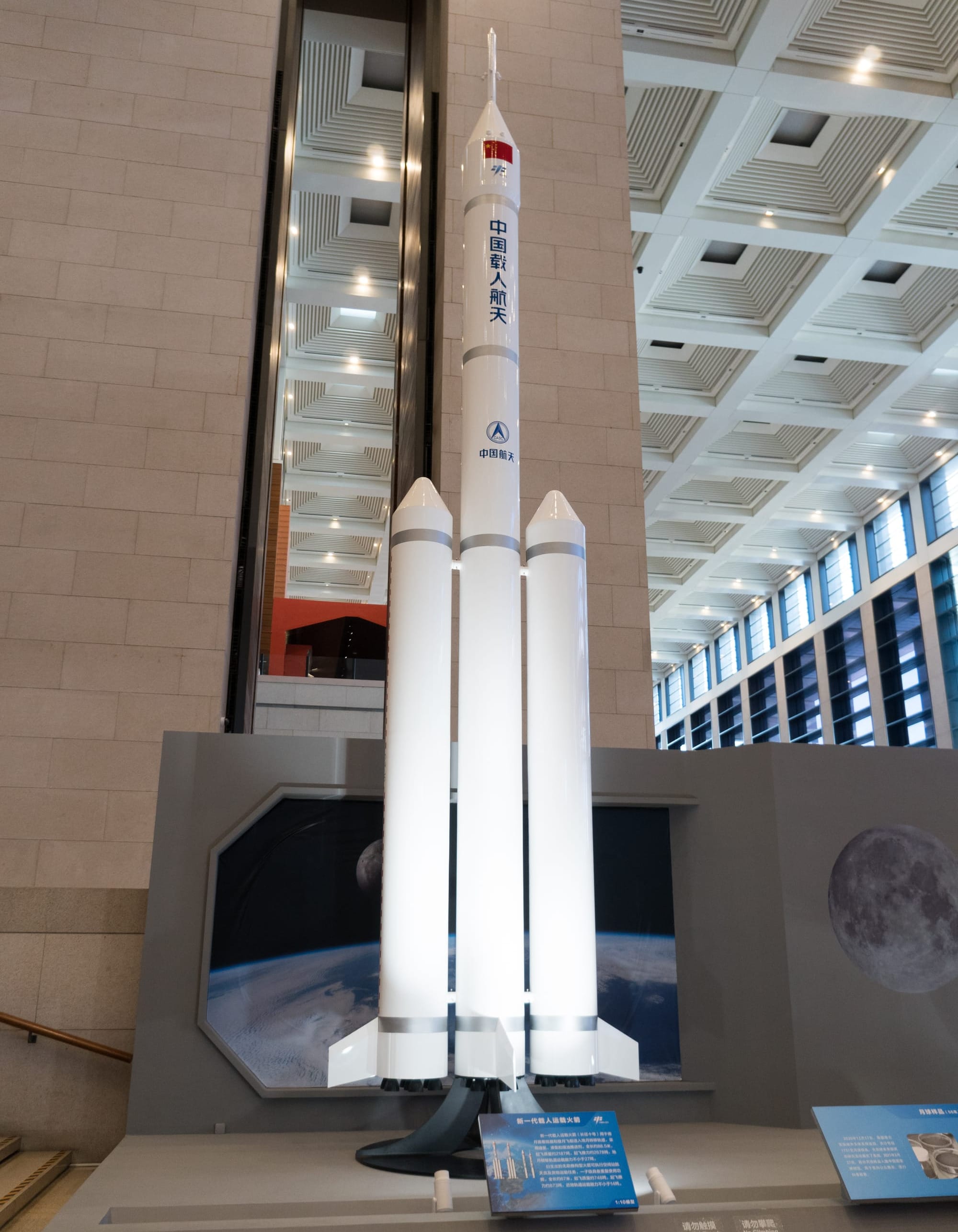
The boosters currently plan to use seven YF-100K engines generating 892 tons of thrust burning rocket-grade kerosene and liquid oxygen. The combined thrust of the two boosters is 1,785 tons of thrust. The expected burn time is currently unknown.
The first-stage is currently planning to use seven YF-100K engines generating 892 tons of thrust burning rocket-grade kerosene and liquid oxygen. Once again the expected burn time is also unknown currently.
The second-stage is currently planning to use two YF-100M engines generating 298 tons of thrust burning rocket-grade kerosene and liquid oxygen. The burn time of the second-stage is also unknown currently.
The third-stage is currently planning to use three YF-75E engines generating 28 tons of thrust burning liquid hydrogen and liquid oxygen. The burn time of the thrid-stage is currently unknown.
The Long March 10 is expected to weigh up to 2,189,000 kilograms while fully fuelled and be up to 93.2 meters tall when on the launch pad.
There are also plans to recover the boosters of the Long March 10 by making the engines restartable and adding grid fins to guide the boosters. The Long March 10 currently does not plan to have landing legs to land and will instead be caught on 'tensioned wires' with 'hooks' on the booster. This is likely to be downrange on a ship.

How is China's space program organized?
China's space activities are largely coordinated by the China National Space Administration (CNSA). This governing body operates under the People's Republic of China's government. The CNSA operates very similarly to NASA with direct governmental spending allocated by Congress for NASA and the Ministry of Finance as well as the National Peoples Congress (NPC) for the CNSA.
The Ministry of Finance handles most of the national budget allocation but the national budget is subject to review by the National Peoples Congress (NPC). It is also subject to review by the State Council. The CNSA operates as a more traditional governmental agency for organizing space sector endeavors.
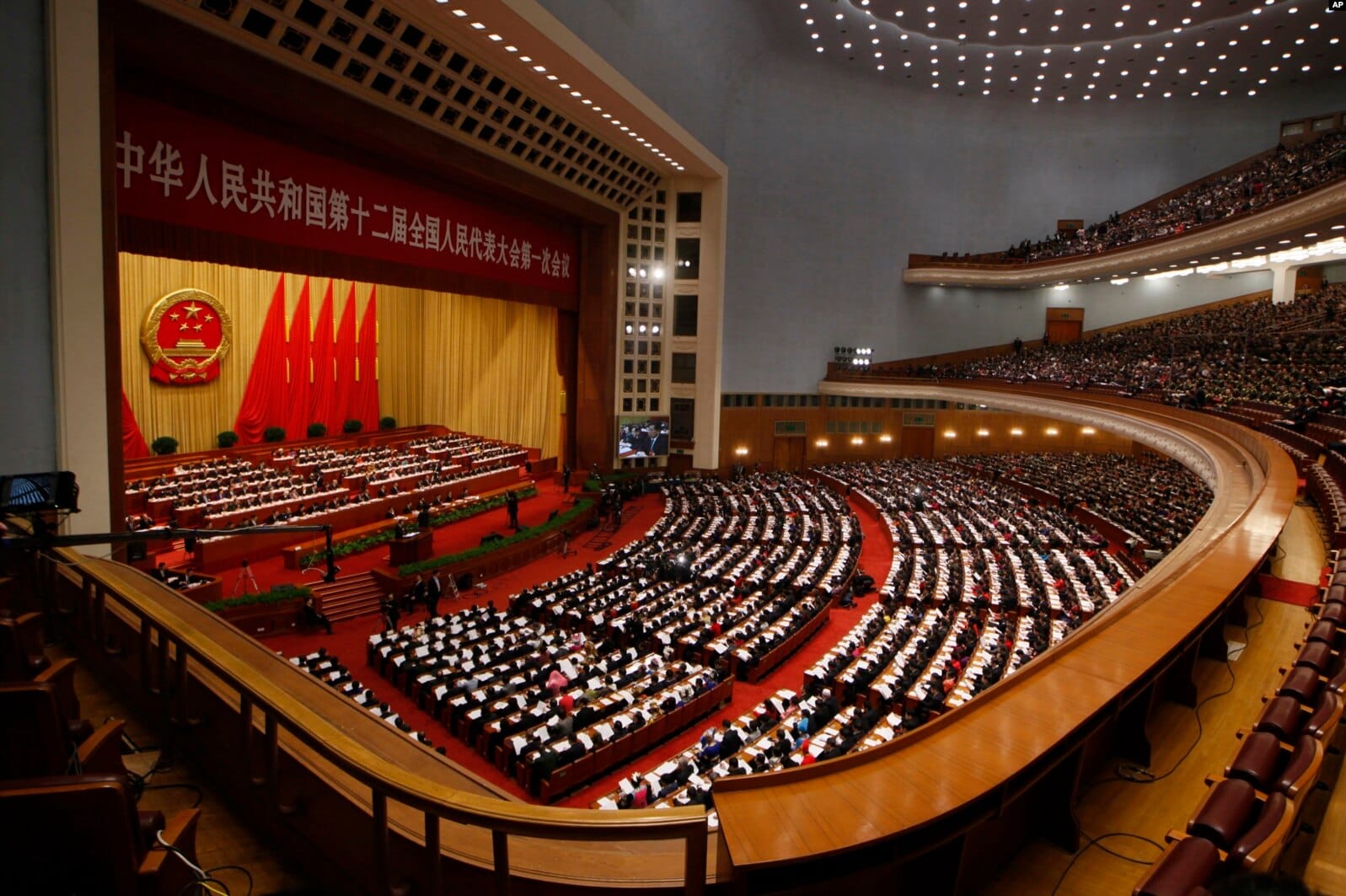
Differing from NASA, China utilizes state-owned enterprises (SOEs) and other agencies that work in collaboration. One of these agencies is the CMSA (China Manned Space Agency). CMSA's functions include development strategy, planning, overall technology, research and production, infrastructure construction, flight missions organization and implementation, utilization and promotion, international cooperation and news-release, etc.
The Ministry of Finance and the Ministry of Science and Technology play key elements in funding of aerospace SOEs. The Ministry of Science and Technology is the executive department of the Central Science and Technology Commission, which coordinates science and technology activities. State-owned enterprises however can often act very similar to commercial entities, receiving bonds through commercial activities, bonds, and bank loans.
These institutions often act as contractors for the CNSA and CMSA while working in close collaboration. Such as the Chinese Academy of Launch Vehicle Technology (CALT), the Chinese government can provide different funding to these agencies that can develop and be pushed before independently but also have a centralized operation by holding political control to push these industries towards accomplishing their respective tasks.
Political support for China's space program operates under national goals of economic development, scientific advancement, and national security. China's space program also operates under more long-term strategic planning to outline long-term goals that are pushed for directly through councils in state-owned enterprises.
In contrast, NASA's budget can fluctuate a lot more with changes in political leadership, congressional priorities, and budgetary constraints. While NASA often operates under multi-year authorization bills and annual budgets, political support for specific programs and initiatives may vary depending on political dynamics.
Due to how China's various agencies and state-owned enterprises are funded through overarching national plans and objectives, China has more clear goals of advancement that are established by the larger government and advocated for by different councils leading the development of certain technologies. In regards to China's moon program, the plans for Chinese development has been lead by large projects such as Project 921 which led to the developmental choices of China's space agency. This is similar to how Congress and administrations may set objectives for NASA but China's is more spread out across multiple agencies and councils.
How is the United States' Space sector managed?
In the United States, NASA operates within a complex political and organizational framework that differs from China's in how it approaches space exploration.
Similar to the China National Space Administration (CNSA), NASA receives direct funding from the government, with its budget allocated by Congress and subject to review and approval. However, unlike the CNSA's funding process, NASA's budget allocation involves negotiations between Congress and the executive branch, including the President's budget proposal and appropriations bills passed by Congress.

NASA's collaboration with industry partners also differs from China's use of state-owned enterprises (SOEs). In recent years, NASA has increasingly relied on public-private partnerships through programs like the Commercial Crew Program. Under this approach, NASA contracts with private companies like SpaceX and Boeing to develop spacecraft and launch systems, reducing reliance on traditional government contractors. However, old contractors like Boeing still wield significant influence due to their long-standing relationships with NASA.
These private partnerships have allowed increasing and steady development of the United States' space sector as NASA struggles with maintaining a stable budget along with support, these partnerships and programs fostered by the government have inspired similar policies in China. Programs like the Commercial Crew Program have led to varying levels of success but it has produced and played a major role in the rise of SpaceX. These partnerships and diversification are also similar to China's segmentation of its space program and how it is governed by multiple bodies.
NASA's collaboration with industry partners also differs from China's use of state-owned enterprises (SOEs). In recent years, NASA has increasingly relied on public-private partnerships through programs like the Commercial Crew Program. Under this approach, NASA contracts with private companies like SpaceX and Boeing to develop spacecraft and launch systems, reducing reliance on traditional government contractors. However, old contractors like Boeing still wield significant influence due to their long-standing relationships with NASA.
Similar to China's collaboration between CNSA and SOEs, NASA works closely with organizations like the Jet Propulsion Laboratory (JPL), which is managed by the California Institute of Technology (Caltech) but funded by NASA. JPL operates as a federally funded research and development center, conducting robotic space missions, planetary exploration, and space technology research in collaboration with NASA. This partnership model allows NASA to leverage expertise from external organizations while maintaining control over mission objectives and outcomes.
Despite these differences, political support for NASA's space program operates within similar parameters of national goals and objectives, including scientific advancement, technological innovation, and national security. However, NASA's budgetary constraints and fluctuating political dynamics can impact the agency's ability to pursue long-term strategic planning and achieve its objectives consistently.
China's Lunar Exploration Program
Progression from Chang'e to Crewed Lunar Missions
China's lunar exploration program has evolved methodically over the years, marked by a series of successful Chang'e missions. These robotic missions laid the groundwork for crewed lunar endeavors, showcasing China's technological capabilities and paving the way for ambitious future missions. The transition from robotic to crewed missions represents a significant leap forward in China's space exploration aspirations. This landmark mission will involve scientific research, sample collection, and the deployment of innovative technologies, and advancing the technologies needed for longer stays in deep space.
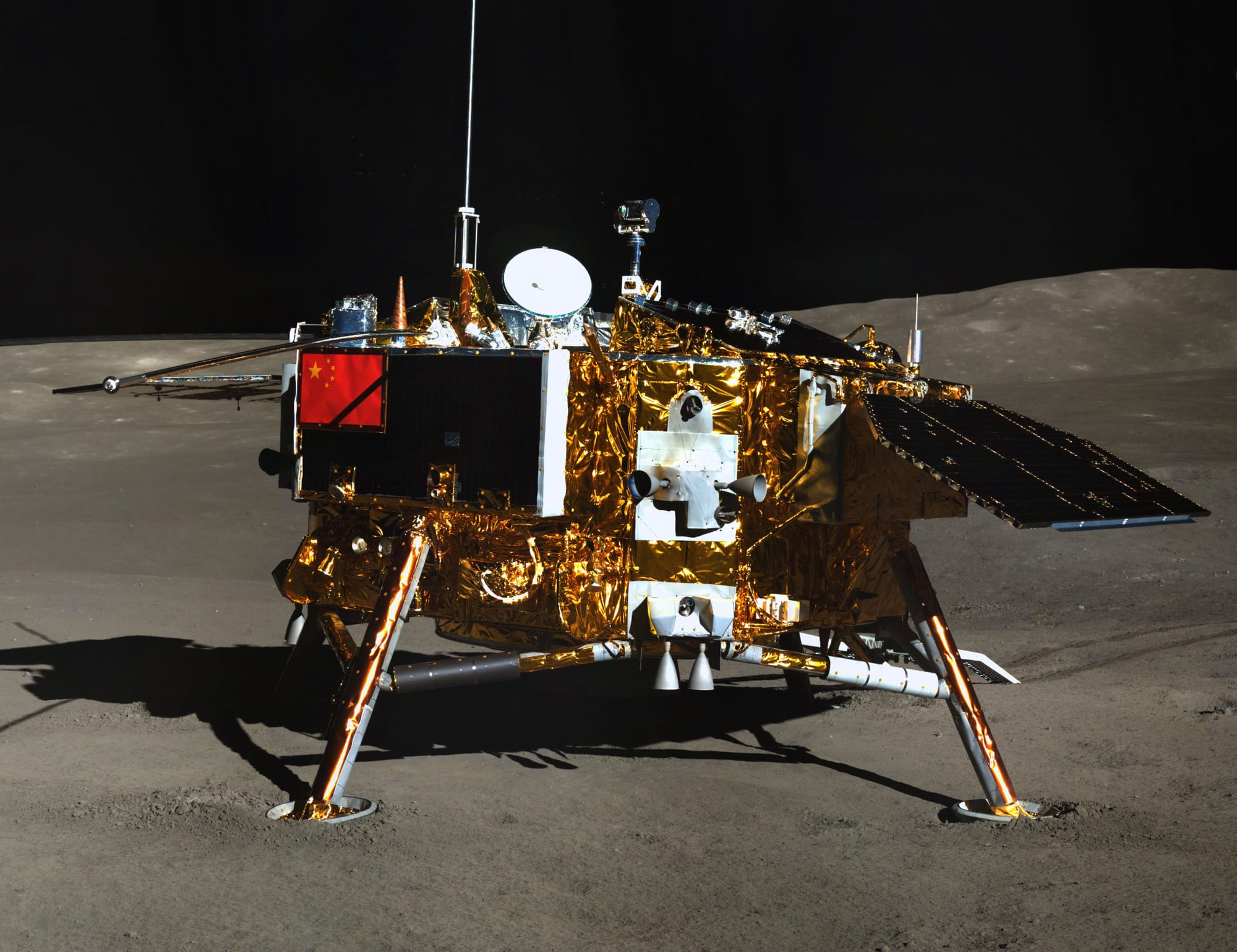
In 2019, China started reviewing preliminary studies for a crewed lunar landing mission in the 2030s and building an outpost near the lunar south pole. As of 2024, China's current goal is to land astronauts on the Moon by 2030 using the Mengzhou crewed spacecraft and the Lanyue crewed lunar lander as outlined above. In 2021, China and Russia announced a joint endeavor towards building a moon base together. Several other countries have signed onto this Sino-Russian endeavor and is more comparable to the US-led Artemis program.
During the robotic phase, one of the most significant hurdles encountered was the operation of the TT&C system(Telemetry, Tracking, and Command). This challenge arose from the need for the system's transmission capability to cover sufficient range to communicate effectively with the probes in lunar orbit. China's standard satellite telemetry boasted a range of 80,000 kilometers (50,000 miles), yet the distance between the Moon and the Earth can exceed 400,000 kilometers (250,000 miles) during certain orbital configurations. Moreover, the Chang'e probes were required to perform numerous attitude maneuvers both en route to the Moon and while operating in lunar orbit. Compounding the issue, China spans approximately 5,000 kilometers (3,100 miles) from east to west, posing an additional challenge to the continuity of TT&C operations. The expansion of the Queqiao network, led by Queqiao-1/2, will serve very useful for the transition towards crewed operations on the moon.
The Chang'e lunar exploration missions have been pivotal in advancing the necessary technologies and procedures for successful lunar operations. During the second phase of the program, innovative hazard avoidance systems were developed to ensure safe landings, while in lunar orbit, complex three-vector control processes were employed to maintain proper orientation and attitude. These missions also demonstrated sophisticated orbit design and navigation techniques for lunar operations, providing valuable experience in navigating the complex three-body system of the Earth, Moon, and spacecraft. Additionally, incorporating automated docking procedures in missions such as Chang'e 5 and Chang'e 6 streamlines docking operations and reduces the risk of human error, essential for future rendezvous operations. Overall, the Chang'e missions have laid a solid foundation for lunar exploration, boosting confidence in China's capabilities for future missions.
Technological Advancements and Collaborative Efforts
China's progress towards crewed lunar missions is bolstered by technological advancements and collaborative initiatives. The development of the Mengzhou crewed spacecraft and Lanyue lunar lander signifies China's dedication to enhancing its space capabilities. Moreover, partnerships with international entities, such as Russia, demonstrate China's commitment to fostering global cooperation in space exploration.
Recent milestones, including tank tests, static fires, and the testing of rudimentary versions of the Mengzhou capsule and reentry simulators, highlight China's steady progress towards crewed lunar missions. These achievements underscore China's position as a formidable player in the global space arena, poised to make significant contributions to lunar exploration and beyond.
History and Development
China's lunar ambitions have not experienced as many delays as the US' program, and they have a less ambitious timeline. However, China is a less developed nation with a less developed space program, and the lunar landing is not meant to serve as a competitor to the Artemis program but as a development of the Chinese program. China frequently has shown that its space endeavors meet deadlines and achieve lofty goals. The crewed lunar program was first announced in May of 2023. Later that same year, we saw test firings of China's main engine for their moon rocket. The first flights of this rocket are slated for 2025 as well as 2026. This will include the LEO and Lunar variants.
A variant of the YF-100 (the main engine to be used on the Long March 10) has also reportedly made several key test firings as of April 2024. This variant will be useful for the reuse of the Long March 10. These test firings also prove useful in understanding as well as building in confidence in the engine design for the lunar operations. Tank sections and simulators have been reported as well to prove the structural integrity of the design for the Long March 10 building confidence for the lunar program.
China's 130-ton level reusable #liquid oxygen-kerosene engine has passed 2 ground ignition tests recently.
— Wu Lei (@wulei2020) April 14, 2024
So far, the engine has completed 15 repeated tests & 30 ignition tests. The total test time has exceeded #3900seconds! pic.twitter.com/8qZC7A3r1J
A firing of an upgraded YF-100 engine in April of 2024 via Wu Lei on X.
Several journals and papers have reported extensive studies towards the use of Long March 10A (LEO variant) for crew and cargo missions after 2026. Yet reports of the lunar rocket can be traced all the way back to the 2020 China Space Conference in Fuzhou, located in east China, and reports from 2018. Development for both Mengzhou, Lanyue, and the Long March 10 can be traced before the announcement of a timeline in 2023. There is not only a clear evolutionary timeline from Chang'e to the crewed phase but also from the Long March 5 to the Long March 10. As shown by Project 921 (the national project to build the Tiangong space station and China's manned space program), China has a history of reaching its goals once it has set them. Political support also stays strong with national objectives defined with CNSA, CMSA, CALT, and CASC. The lunar program represents an extension of the Chinese Manned space program but also an extension of the robotic program.
Progress of America's planned return to the Moon
The United States of America has been working towards returning to the Moon since the presidency of George W. Bush with the Constellation program, which led to the creation of the Orion spacecraft. Constellation would end up canceled by the Obama administration and changed into a crewed mission to an asteroid, this is also where the Space Launch System rocket would be born. Plans for a crewed asteroid mission would end up being snubbed by the Trump presidency with the plan of returning America to the Moon by the mid-2020s.
Despite the political setbacks, the United States has flown its lunar crew capsule, Orion, on two test flights. The first was in December of 2014 when Orion flew into low Earth orbit atop of a Delta IV Heavy. Orion's second test flight took place in November of 2022 when it was launched atop of the Space Launch System rocket out toward the Moon. The second test flight would last twenty-five days and have the capsule spend approximately two weeks in cislunar space.
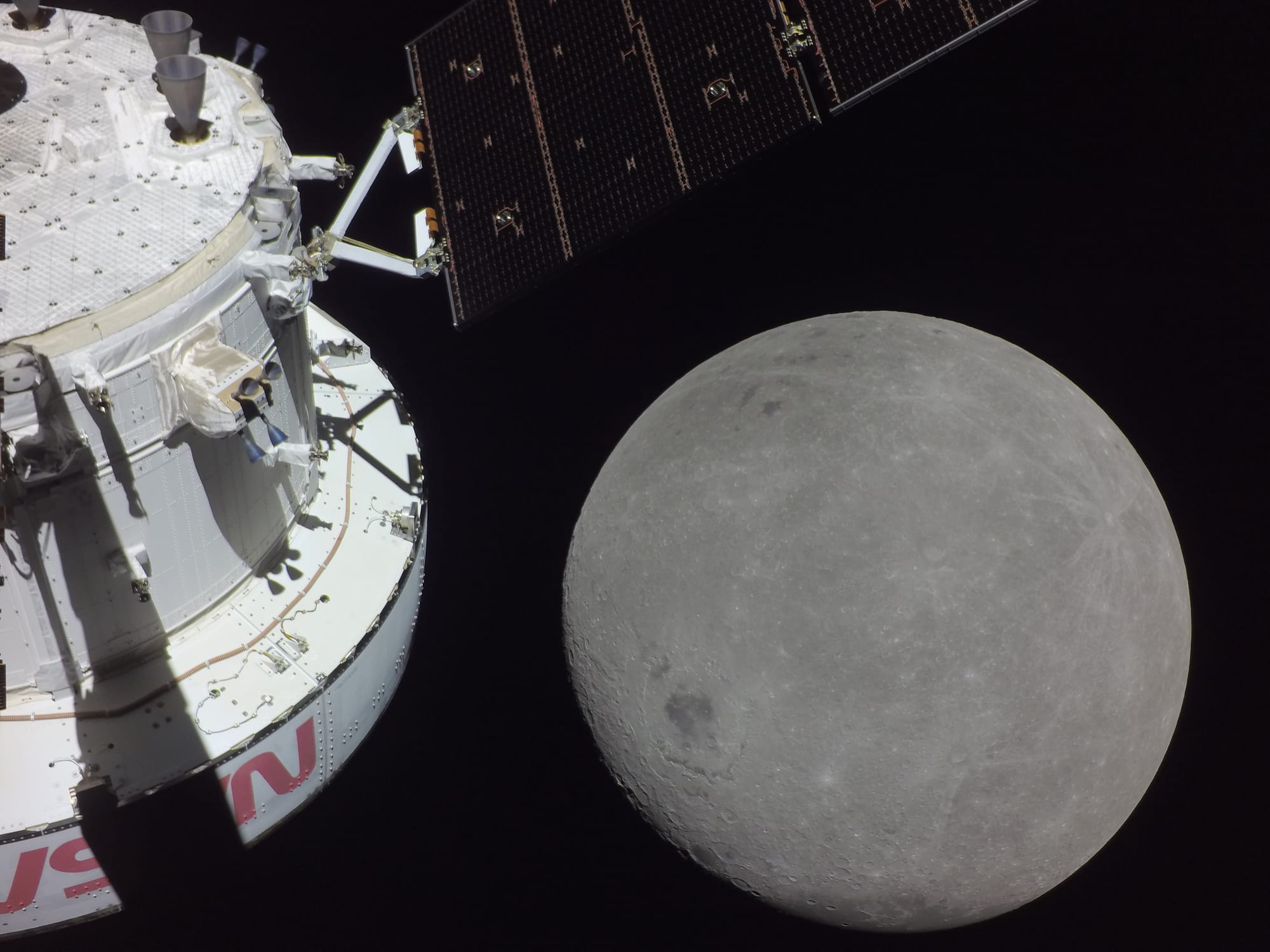
The United States has also landed a robotic lunar lander on the surface of the Moon in recent months, the first time a spacecraft from America landed on the Moon since Apollo 17 in 1972. The landing mission was part of NASA's Commercial Lunar Payload Services program, through which the agency hopes to have low-cost and frequent access to the lunar surface, and was performed by a company called Intuitive Machines.
Closing remarks from the authors
This article is neither short nor simple with some facts likely to change in the near future as both programs progress. If you know of any information that should be added or corrected reach out to the links available in Brie and Jack's author pages.




